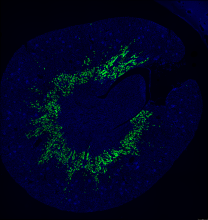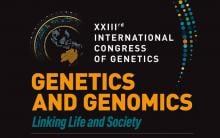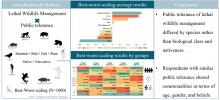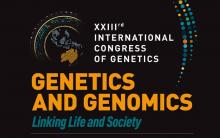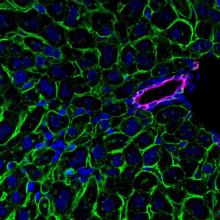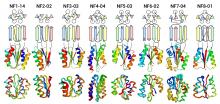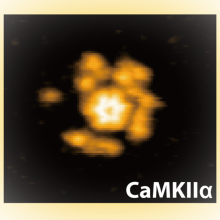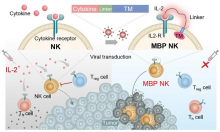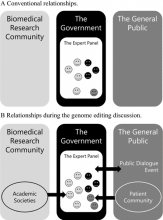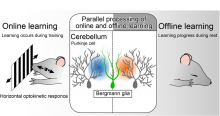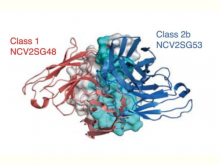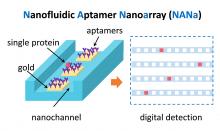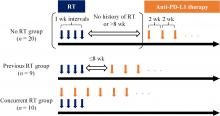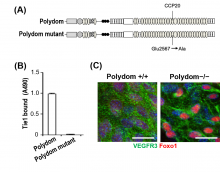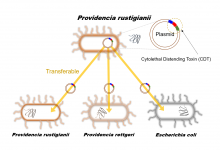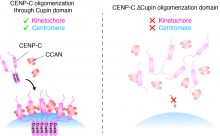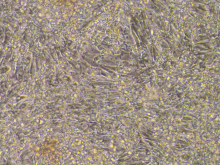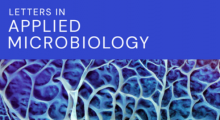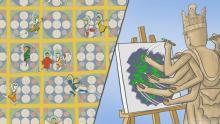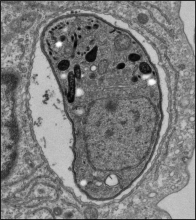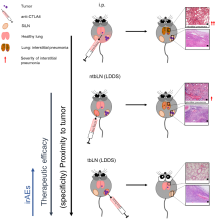Biology
News
24 Jul 2023
A protein that transports lipid into cells reveals clues to treating a major health problem affecting kidneys.
21 Jul 2023
An exquisitely preserved fossil forest from Japan provides missing links and helps reconstruct a whole Eurasia plant from the late Miocene epoch.
21 Jul 2023
Agricultural genetic stories reported at the International Congress of Genetics in Melbourne.
20 Jul 2023
Japan’s population may be on the decline, but it is the opposite for many wildlife species. This has increased the number of human-wildlife interactions. Controversially, lethal management is sometimes employed to manage this issue. But a holistic understanding of the public’s attitude to this approach has been lacking. Now, researchers have surveyed the public’s opinion on the topic, hoping to provide data that can direct future management practices.
20 Jul 2023
US$500,000 Gruber Genetics Prize awarded in Melbourne
20 Jul 2023
Thursday at the International Congress of Genetics in Melbourne
19 Jul 2023
Scientists have combined two light wavelengths to deactivate a bacterium that is invulnerable to some of the world’s most widely used antibiotics, giving hope that the regime could be adapted as a potential disinfectant treatment.
19 Jul 2023
Omega-3 lysolipids are important for protecting the liver from dietary fat, according to Duke-NUS researchers and collaborators from SGH.
18 Jul 2023
Research stories from the International Congress of Genetics in Melbourne Tuesday 18 July 2023
18 Jul 2023
RNases have been proposed as a treatment against systemic autoimmune diseases. Researchers from Osaka University showed that RNases have a dual action. In some cases, RNases are detrimental and stimulate the immune response by promoting the binding of antibodies to their targets. These findings will improve the understanding and treatment of systemic autoimmune disorders.
11 Jul 2023
A research team has discovered an astounding array of unexplored protein folds. This research will expand our understanding of the depth of the protein universe and the possibilities for de novo design of functional proteins.
11 Jul 2023
The entire biosynthetic pathway of actinopyridazone has been unveiled, revealing that an unprecedented carrier protein-mediated ring-forming step is key to its synthesis.
05 Jul 2023
Researchers at Kanazawa University report in Science Advances high-speed atomic force microscopy experiments that show the structural and chemical changes in an enzyme thought to play a vital role in modulating the strength of neural connections.
04 Jul 2023
- Professor Minseok Kim’s team at the DGIST confirmed the excellent anticancer effects of the NK cell therapy product that can self-activate in preclinical trials with CT Cells
- This work is expected to be applied in various fields as a next-generation anticancer therapy using NK cells
28 Jun 2023
Researchers from Osaka University analyzed discussions on research governance of human genome editing in the Expert Panel on Bioethics in Japan and identified the positive roles played by related research communities, the government, and the general public in the policy-making process. It is expected to provide more effective and practical guidance for countries and organizations seeking to work with diverse stakeholders in the governance of emerging medical technologies.
27 Jun 2023
Have you ever studied hard for a test the night before, only to fail miserably the next day? Alternatively, you may have felt unconfident after studying the night before when, to your astonishment, you recall effortless the content on test day. This discrepancy may be down to the separate and independent way in which our brain processes short- and long-term memory, Tohoku University researchers have revealed.
26 Jun 2023
What scientists learned about the rare antibodies targeting SARS-CoV-2’s Achilles’ heel could help fine-tune our COVID-19 vaccine strategy for longer-lasting immunity.
23 Jun 2023
An international team led by Professor Yan Xu from Osaka Metropolitan University has developed a groundbreaking nanofluidic device, named NANa, capable of stochastically capturing and digitally detecting individual proteins at cellular concentrations. This tool, vital for precision medicine, is designed to handle tiny volumes equivalent to a single cell's contents and can identify single biomolecules even in high-concentration environments. The team plans to conduct further demonstrations using actual cell samples and explore the integration of this tool with AI and biological big data. This research could potentially revolutionize personalized disease prevention and treatment.
23 Jun 2023
A combination of radiotherapy followed by immunotherapy is a promising strategy for the treatment of oral malignant melanomas in dogs.
19 Jun 2023
A key protein for sperm maturation identified, Understanding gel formation, Urine test predicts organ diseases, A laser drills holes in a graphene film. Plus in our blog - The frogs of Borneo: more than just a race. Read all in the latest Editor's Choice.
19 Jun 2023
Researchers from Osaka University found that the binding of two proteins—Polydom and Tie1—is essential for lymphatic cell migration in the remodeling of lymphatic vessels, which transport molecules around the body. A better understanding of the development and remodeling of the lymphatic system will lead to better therapeutic options for diseases such as lymphedema, which is common in cancer patients and currently has no cure.
15 Jun 2023
A joint research group led by Osaka Metropolitan University has clarified how pathogenic genes in some Providencia spp., which have gained attention as causative agents of food poisoning as well as enterohemorrhagic Escherichia coli. O157 and Salmonella, are transferred within bacterial cells. Their findings are expected to provide new insights into the identification of infection routes of Providencia spp. and the establishment of preventive methods for food poisoning.
08 Jun 2023
A team led by researchers from Osaka University elucidated a molecular mechanism that is crucial for separating genetic material into daughter cells during cell division. A protein called CENP-C is part of a complex called the kinetochore, which supports the movement of chromosomes. Two portions of CENP-C, the CCAN-binding domain and Cupin domain, are needed for CENP-C to function. The Cupin domain repeats itself through oligomerization, which is essential for proper CENP-C function.
08 Jun 2023
A stem cell therapy treatment developed by Duke-NUS Medical School researchers for heart failure has shown promising results in preclinical trials. These cells, when transplanted into an injured heart, are able to repair damaged tissue and improve heart function.
07 Jun 2023
The peer-reviewed journal Letters in Applied Microbiology is recruiting its first intake of Junior Editors as part of its new drive to nurture early careers talent.
06 Jun 2023
Ultrafast fluorescent imaging technology brings the molecular dynamics of living cells into clear view.
05 Jun 2023
Researchers from Osaka University developed an in vivo CRISPR screen to analyze factors affecting Toxoplasma gondii fitness in healthy and immunodeficient mice. Mice were infected with Toxoplasma containing CRISPR libraries that targeted specific genes; genetic sequencing was then performed to identify which genes are important to fitness. The genetic screen clarified the contributions of host genetics and parasite genetics and can contribute to the development of strategies for toxoplasmosis treatment and prevention.
01 Jun 2023
Tests could soon identify patients who will respond well to the available treatment for chronic myeloid leukaemia and those who will be resistant to it—which could improve their chances of survival.
01 Jun 2023
Scientists at Tohoku University have discovered a novel approach that improves the efficacy of immune checkpoint blockade - a novel form of cancer treatment utilizing immune checkpoint inhibitors - and minimizes the associated side effects. Using immune checkpoint blockades to target tumor-positive lymph nodes, they generated a robust anti-tumor response against both local and systemic metastases.
Events
Sorry, nothing coming up for this discipline
Researchers
Sorry, nothing coming up for this discipline
- « first
- ‹ previous
- 1
- 2
- 3
Giants in history
Sorry, nothing coming up for this discipline
- « first
- ‹ previous
- 1
- 2
- 3



